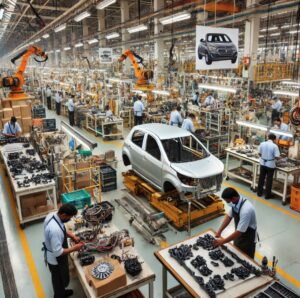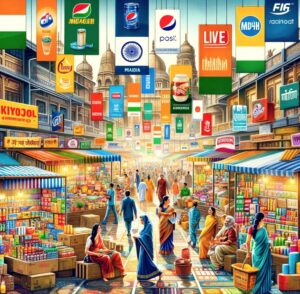Introduction
In the competitive landscape of the automotive components industry, companies like LGB, Omax, ZF, and Sona BLW are constantly striving to innovate and expand. This analysis delves into various critical aspects of these companies, providing insights into their business models, market strategies, strengths, and financial performance.
LGB (L.G. Balakrishnan & Bros)
Business Model and Segments
L.G. Balakrishnan & Bros, commonly known as LGB, operates primarily in the manufacturing of automotive chains, sprockets, and other transmission products. The company serves both the OEM (Original Equipment Manufacturer) and aftermarket segments, focusing on two-wheeler and four-wheeler markets.
Future Strategies
LGB is aiming to expand its product portfolio and enhance its R&D capabilities to cater to the evolving needs of the automotive industry, especially with the shift towards electric vehicles (EVs).
Strengths and Weaknesses
Strengths:
- Strong brand recognition in the Indian market.
- Diversified product range catering to multiple vehicle segments.
Weaknesses:
- High dependence on the two-wheeler segment.
- Limited global presence compared to competitors.
Profit Formula
LGB’s profit formula relies on cost-effective manufacturing, leveraging economies of scale, and maintaining strong relationships with OEMs.
Investors and Customers
The company has a mix of institutional and retail investors. Major customers include leading automotive manufacturers like Bajaj Auto, Hero MotoCorp, and TVS Motor Company.
Market Capitalization
As of the latest data, LGB’s market capitalization is approximately INR 2,500 crores.
Omax Auto
Business Model and Segments
Omax Auto specializes in manufacturing various automotive components, including sheet metal components, tubular components, and machined parts. It serves a diverse range of vehicle segments, including passenger vehicles, commercial vehicles, and two-wheelers.
Future Strategies
Omax Auto is focusing on expanding its export markets and increasing its presence in the electric vehicle components segment. The company is also investing in automation and advanced manufacturing technologies.
Strengths and Weaknesses
Strengths:
- Wide product range catering to multiple vehicle segments.
- Strong engineering and manufacturing capabilities.
Weaknesses:
- Vulnerability to fluctuations in raw material prices.
- Competitive pressure from larger players.
Profit Formula
Omax Auto’s profit formula is centered around operational efficiency, cost management, and technological innovation.
Investors and Customers
The company has a strong institutional investor base. Key customers include Tata Motors, Ashok Leyland, and Maruti Suzuki.
Market Capitalization
Omax Auto’s market capitalization is around INR 1,200 crores.
ZF Friedrichshafen AG
Business Model and Segments
ZF Friedrichshafen AG, a German company, operates globally, providing technology solutions for the automotive and industrial sectors. It is involved in manufacturing driveline and chassis technology, as well as active and passive safety systems.
Future Strategies
ZF is heavily investing in autonomous driving technologies and electric mobility solutions. The company aims to be a leader in smart mobility and connected vehicles.
Strengths and Weaknesses
Strengths:
- Strong global presence and extensive product portfolio.
- Leading innovation in autonomous and electric vehicle technologies.
Weaknesses:
- High R&D expenditure impacts short-term profitability.
- Complex global operations can lead to management challenges.
Profit Formula
ZF’s profit formula hinges on innovation, strategic partnerships, and maintaining a strong presence in both the OEM and aftermarket sectors.
Investors and Customers
ZF is privately held, with significant ownership by the Zeppelin Foundation. Major customers include global automotive giants like BMW, Daimler, and Volkswagen.
Market Capitalization
While privately held, ZF’s estimated market valuation is in the range of EUR 30-40 billion.
Sona BLW Precision Forgings
Business Model and Segments
Sona BLW specializes in precision forging and gear manufacturing, supplying critical components for automotive drivetrains. The company focuses on both traditional ICE (Internal Combustion Engine) vehicles and electric vehicles.
Future Strategies
Sona BLW is expanding its electric vehicle components portfolio and increasing its global footprint through strategic acquisitions and partnerships.
Strengths and Weaknesses
Strengths:
- Strong technological capabilities in precision forging.
- Growing presence in the EV market.
Weaknesses:
- High competition in the forging industry.
- Dependence on a few key customers.
Profit Formula
Sona BLW’s profit formula includes high-precision manufacturing, technological innovation, and maintaining long-term relationships with OEMs.
Investors and Customers
The company has attracted both domestic and international investors. Key customers include major global automotive manufacturers like Ford, General Motors, and Tesla.
Market Capitalization
Sona BLW’s market capitalization is approximately INR 20,000 crores.
Comparative Analysis
Business Models and Market Segments
While all four companies operate within the automotive components sector, their market focus and product specializations vary. LGB and Omax primarily cater to the Indian market with a focus on two-wheelers and diversified components, respectively. In contrast, ZF and Sona BLW have a more global focus, with significant investments in emerging technologies like EVs and autonomous driving.
Future Strategies
ZF and Sona BLW are at the forefront of innovation, particularly in the EV and autonomous vehicle sectors. LGB and Omax, while also evolving, are more focused on expanding their product lines and enhancing operational efficiencies.
Strengths and Weaknesses
ZF’s extensive global presence and advanced technology investments give it a competitive edge, but also come with high costs. Sona BLW’s precision forging expertise and EV focus position it well for future growth, despite high competition. LGB and Omax, with strong local markets and diversified products, face challenges in scaling globally and managing raw material costs.
Profit Formulas
Efficiency, cost management, and innovation are key to all four companies’ profit formulas. However, ZF and Sona BLW’s heavy investment in R&D indicates a longer-term profitability focus, while LGB and Omax emphasize immediate operational efficiencies.
Market Capitalization and Financial Health
ZF leads in estimated market valuation due to its global operations and technological advancements. Sona BLW follows, reflecting its strong market position and growth potential. LGB and Omax, while smaller, are stable players in their respective niches.
Conclusion
LGB, Omax, ZF, and Sona BLW each bring unique strengths and strategies to the automotive components industry. ZF and Sona BLW are poised for significant growth in the evolving EV and autonomous vehicle markets, while LGB and Omax maintain strong positions in their respective local markets. Understanding these dynamics is crucial for stakeholders looking to navigate the competitive landscape of automotive components.




